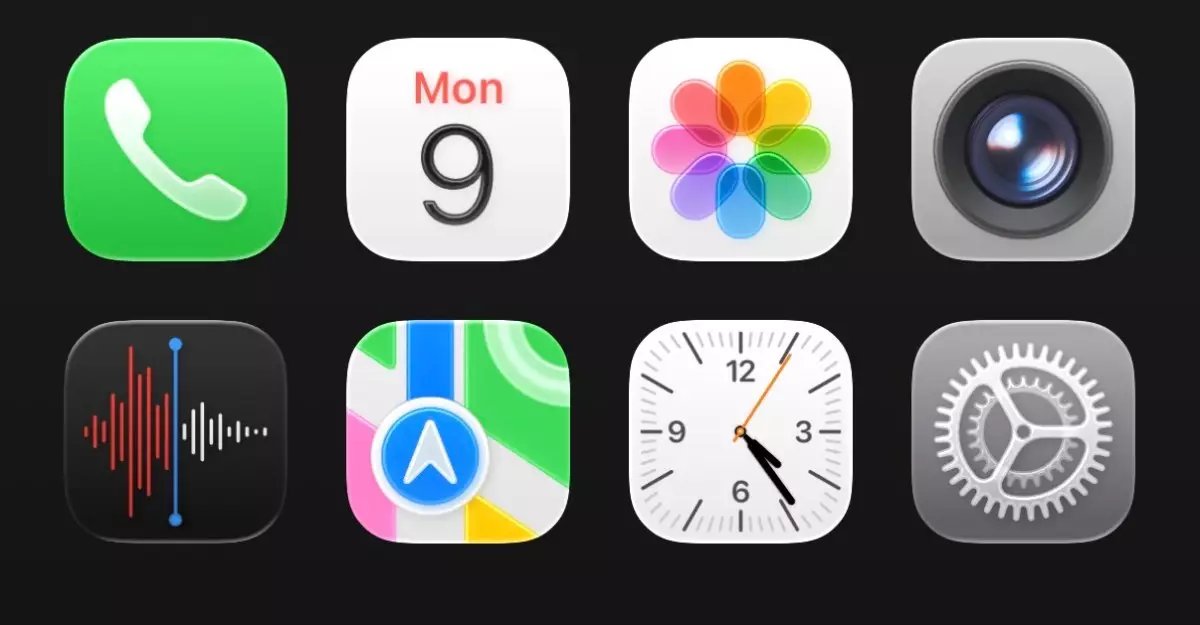In the fast-paced world of technology, few companies generate as much buzz as Apple, and its latest innovation, the Liquid Glass design language introduced during WWDC 2025, certainly exemplifies this. As someone deeply embedded in the tech culture, I have mixed feelings about this latest aesthetic overhaul. This transformation brings an entirely new look to Apple devices, but it also raises critical questions about usability and functionality that merit a closer examination.
The Liquid Glass design attempts to create an ethereal, translucent aesthetic, where app icons and navigation elements appear to float above the background. The intention behind this change is commendable, aiming to give users a layered visual experience that emphasizes depth. However, upon first encounter, this fluid interface feels more disorienting than enlightening. Users are thrust into a world where simplicity is traded for a shiny, chaotic visual clutter that could lead to confusion rather than clarity.
Aesthetic Appeal vs. Usability
Apple’s ambition to merge art with technology is evident, yet the first iteration of Liquid Glass showcases the pitfalls of prioritizing form over function. While aspects of the interface, such as the rounded tab bars in the Clock app, exhibit a playful dynamism reminiscent of water, they also provoke a cognitive overload. The cluttered layout feels overwhelming rather than inviting, pulling the focus away from the interactions themselves—after all, isn’t the purpose of a user interface to facilitate smooth navigation?
Take, for instance, the revamped Control Center. Initially a sleek gateway to quick settings, it now feels encumbered by its newfound transparency. During use, the lightness encouraged by Liquid Glass becomes achingly heavy, drowning users in distractions. I can’t help but wonder if Apple’s design team became too enamored with their artistic vision, neglecting to consider the day-to-day implications for the end user. In their quest to innovate, have they inadvertently created a barrier to seamless usability?
The Evolution of Interaction Design
Beyond aesthetics, the Liquid Glass interface introduces a notable shift in interaction dynamics. The functionality of dragging elements, like the water droplet effect when navigating through tabs, is an intriguing concept that initially draws users in with its novelty. However, repeated interactions reveal an annoying sluggishness that detracts from the experience. What once was a swift action now feels bogged down by unnecessary detail. It represents a fine line between creativity and practical design; innovation must serve a purpose, augmenting rather than obstructing user experience.
Moreover, navigating through apps like Safari becomes an experiment in patience. The bending effects of Liquid Glass are visually engaging, but the practicality of reading and accessing functions suffers. Consistency in the appearance of system prompts and app interfaces tends to fade under the liquid lens of transparency, which can be disorienting.
A Glimpse into the Future
While the first impressions of Liquid Glass were jarring, I see a flicker of potential. After a few hours of interaction, initial resistance softens, revealing glimpses of how the design can evolve in upcoming iterations. It’s crucial that Apple recognizes the need for adjustments before the official launch of iOS 26. Simplifying spaces between menu items and improving the opacity of overlay elements could significantly enhance user experience.
The beauty of technology is its evolution, and just as Apple has faced criticism in the past, history suggests that they are more than capable of recalibrating their vision. With an abundance of tools at their disposal, including feedback from the developer community, Apple can take the Liquid Glass framework to new heights, enriching it with intuitive refinements that marry artistry with utility.
What remains clear is that innovation is not just about shiny new designs; it’s about creating tools that empower and uplift the user experience. As the Liquid Glass interface matures, I fervently hope it embraces this philosophy, providing a harmonious blend that respects usability while pushing the boundaries of modern aesthetics.

